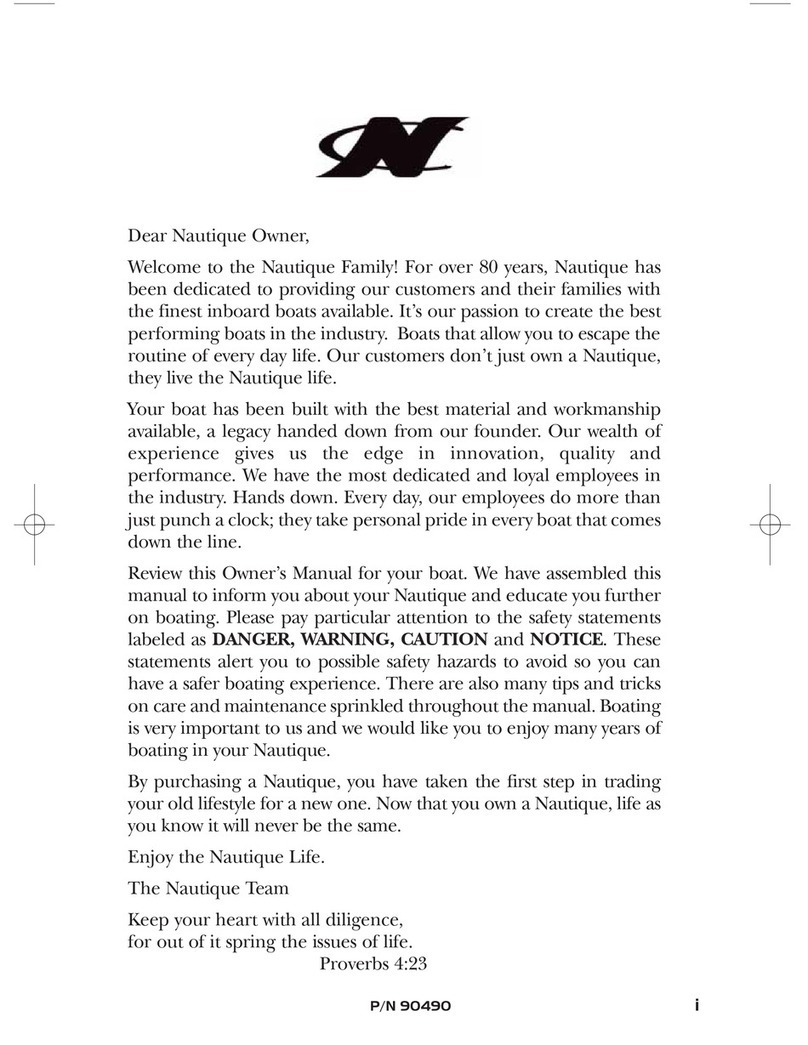vii
Basic Rules of the Road ......1-42
Boating Regulations.........1-42
Encountering Another
Vessel .................................1-43
Aids to Navigation............1-47
Night Running .................1-53
Watersports Safety ...............1-56
Hand Signals.....................1-58
Towed Person Safety
Responsibilities.................1-58
Additional Precautions
for Towed Skier/Rider.....1-60
Tow Line Guidelines........1-62
Fallen Skier or Rider........1-63
Develop WATER SENSE..1-64
Emergency Procedures .......1-69
Explosion and Fire...........1-69
Swamping and Flooding..1-70
Capsizing...........................1-71
Staying Afloat....................1-71
Collisions...........................1-71
Grounding ........................1-72
Person Overboard ............1-72
Drowning ..........................1-73
Medical Emergency..........1-73
Operation Failure.............1-73
Towing...............................1-73
200-OB, 200-CB, 200-V.........2-1
Specifications .........................2-1
200-OB, 200-CB ..................2-1
200-V....................................2-1
200 Nautique Dash Pod and
Console...................................2-3
200-OB, 200-CB Team Dash
Pod and Console ...................2-5
Keys .........................................2-5
200-V Team Dash Pod and
Console...................................2-7
Keypad ....................................2-9
200 Open Bow Deck
Layout ...................................2-10
200 Closed Bow Deck
Layout ...................................2-12
200 V-Drive Deck Layout ....2-14
200-OB Seating Area ...........2-16
200-CB Seating Area............2-17
200-V Seating Area ..............2-18
Standard and Optional
Equipment ...........................2-19
Controls and Indicators .......3-1
Steering ..................................3-1
Hydro-Gate™ Control and
SportShift™............................3-2
Shifter/Throttle.....................3-4
Emergency Stop Switch .....3-5
Nautique Dash Pod ...............3-6
Gauges.................................3-6
Speedometer Calibration ..3-8
Control Switches.................3-8
12-Volt Port .......................3-11
Nautique Digital
Cruise ................................3-12
Team Dash Pod....................3-15
Keypad...............................3-15
Switches .............................3-20
Nautique LINC 2.0..............3-22
Product Information........3-22
Basic Navigation
Features .............................3-23
Quick Access Key
Features .............................3-24
Nautique LINC 2.0 – River
Mode..................................3-44
Nautique LINC 2.0 – River
Mode in Integrated
Zero Off 3 Event...............3-52
D-Drive front matter_2014_Nautique Ski front matter.qxd 9/3/13 10:55 AM Page vii




























